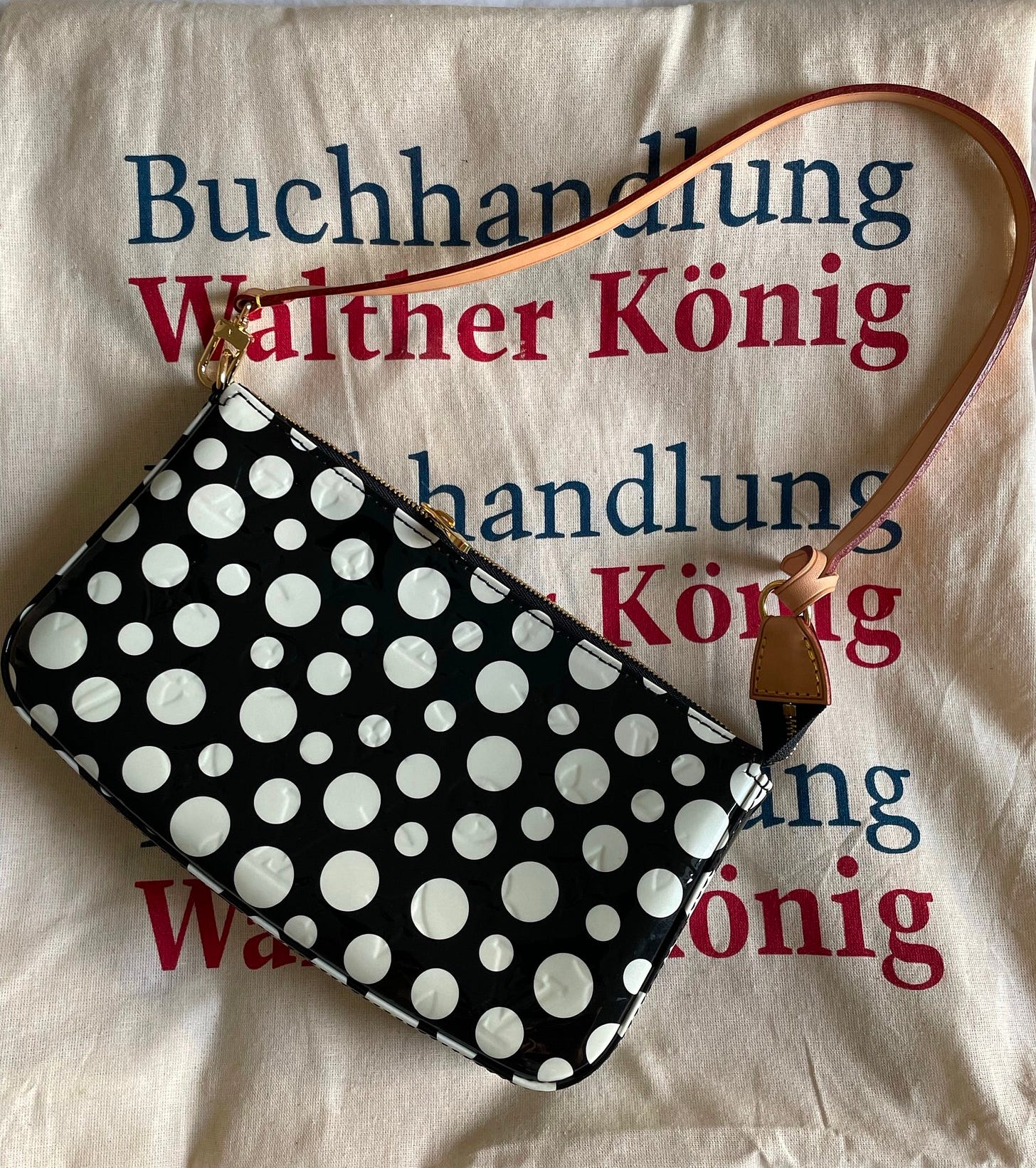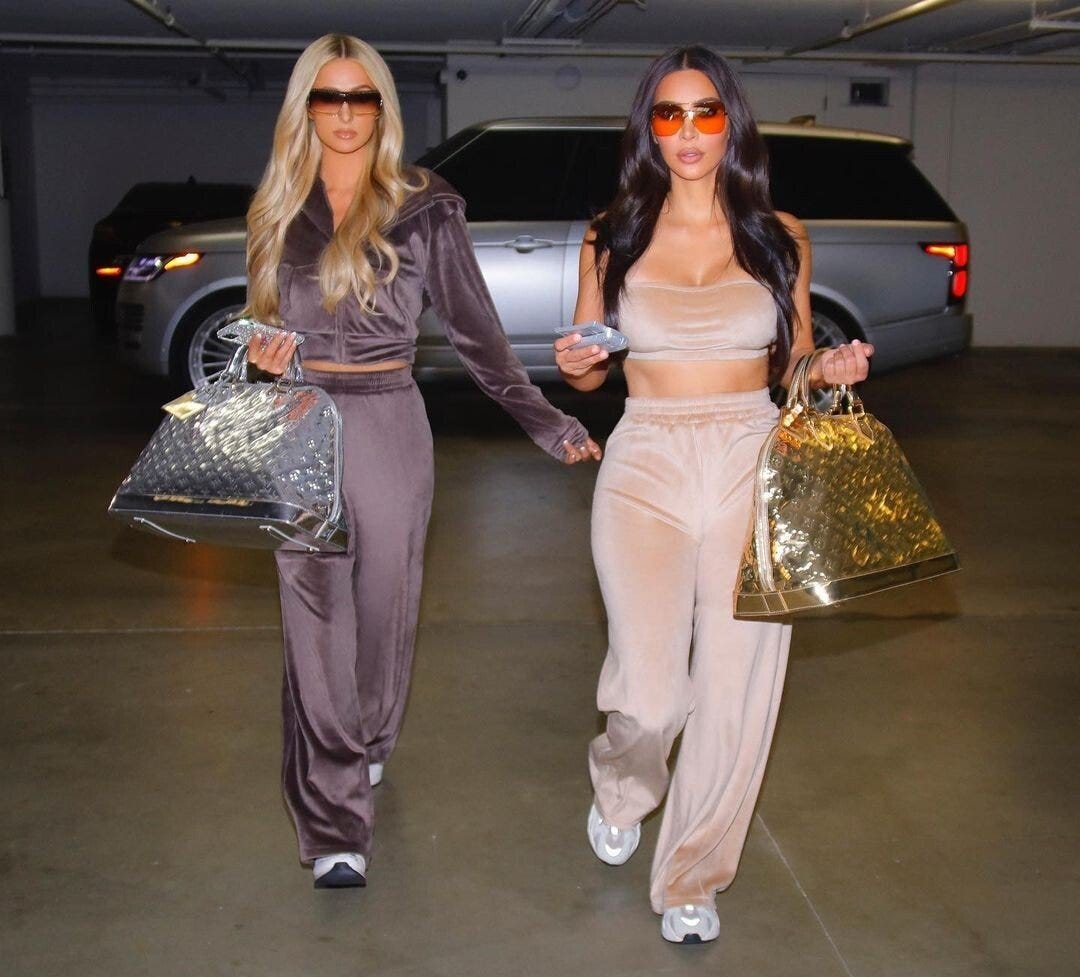Kusama x Vuitton and the Merch-ification of Art
Archival in Nature - Item 7: a 2012 spotty Louis Vuitton pochette
Marc Jacobs was a pioneer of the art-fashion collaboration, even from the beginning of his tenure at Louis Vuitton (‘LV’) in the late ‘90s. Though the format now feels ubiquitous, LV’s 2012 capsule with the Japanese artist Yayoi Kusama was still pushing the envelope. At that time, Kusama was well-known, but much less everywhere than she is now. The collaboration, which saw her polka motifs dotted over iconic Vuitton leather goods and set in immersive store concepts with giant pumpkins, helped to cement her as one of the most recognisable artists on the planet. It also solidified the commercial affinity between luxury goods and high art. If Jacobs's earliest artist collaborations, such as those with Stephen Sprouse and Takashi Murakami, walked a tightrope between the two worlds, Kusama's 2012 capsule built the bridge and left it there.
After Kusama's major Tate retrospective, also in 2012, the 15-year-old me became obsessed with her. Knowing I'd likely never own an original artwork, I began coveting a piece of the limited edition LV collection, scouring Yahoo! Auctions Japan for something within touching distance of my budget. In 2021, I found a spotted ‘pochette’ bag in perfect condition on eBay (in black, though I'd really coveted the red), and I bid on it immediately. I'm not much of a Louis Vuitton fan, and I don't like the classic PVC monogram bags, but I wear this bag with glee - much more than I'd feel towards a standard brown ‘pochette’.
This emotional experience, of being able to access a sliver of high art (usually of singular production and expensive) via a fashion item (that, though hardly cheap, costs a fraction of the price1), is emblematic of the role that such collaborations have begun to play in the luxury industry. The thriving 'merch-ification' of art, including via luxury capsules, has gathered momentum not only because it's a novel way to market product, but because it opens a new door into the world of fine art, which has long felt esoteric and exclusory to many2. The potential for virality and ability to connect to artists via social media has only been further boon to the trend, with artists like Kaws and the very buzzy Slawn managing to grow online fanbases and land major-label collaborations the way only a popstar could have 20 years ago.
Kusama's work, too, has become catnip for Instagram. There was a point in 2023 when it felt like you couldn't open the app without seeing at least five selfies taken in her 'Infinity Mirror Rooms' exhibition3. Social media marketing aside, there is something that seems universally appealing - even hypnotic - to viewers about her use of simple but repeating patterns, which flood across canvases, sculptures, furniture, walls, and even the artist's own body. The dot motif in particular, as used on this ‘pochette’, has been central to Kusama’s work since the late-1950s; she has said that the fixation came from childhood hallucinations, in which polka dots would cover every visible surface. In the case of this bag, I particularly like how the polka print is overlaid with the LV monogram, embossed on the vernis, to combine signature patterns.
Regarding the 'Monogram Vernis', Vuitton’s embossed patent leather is given its lacquered shine by combining calfskin with a layer of plastic. Introduced in late 1998, in Marc Jacobs's first year as creative director, it has come to be its own house code4. It was used on popular bag shapes like the ‘Reade’, the ‘Bedford’ and the ‘Alma’, and the latter quickly became a celebrity staple in the Noughties, with Paris Hilton and Kim Kardashian notable fans (the pair also used the bags in a 2020 campaign for Skims). The material is very durable and scratch-resistant because of the plastic. Because of this, the bag is my go-to now (though the glue on the original small leather strap hasn't held up as well, so I use a silver Stefan Cooke 'bottle-cap' cross-body strap instead).
The second Kusama x Vuitton collaboration was released in 2023, first teased on the label's SS23 runway. I don't like it as much as the first. This may be partly to do with Justin Timberlake being in the campaign, and partly a reflection of how my attitude has changed towards Kusama's commercialisation in the last decade. From a product perspective, I don't like most current commercial art collaborations (I wish they’d innovate with the design more, not just put motifs on top of standard styles). Also, being ten-a-penny, they don't feel like they'll be a lasting part of fashion history in the same way that the earliest capsules were. But maybe that's me being a hypocrite.
Plus, collaborations feel more exclusive due to their limited edition runs. Even for luxury brands, annual production volumes of core ‘replenishment’ bag styles can be in the millions, especially at a leather goods-focused label like LV.
As Lei Takanashi points out in a December 2024 piece for BOF, titled "Why Fashion Needs the Art World More Than Ever", this also partly explains the booming success of fairs like Art Basel and Frieze, popular with demographics beyond the camera-shy and old-monied, or crypto millionaires.
Which was available to visit at the Tate from May 2021 to April 2024.








